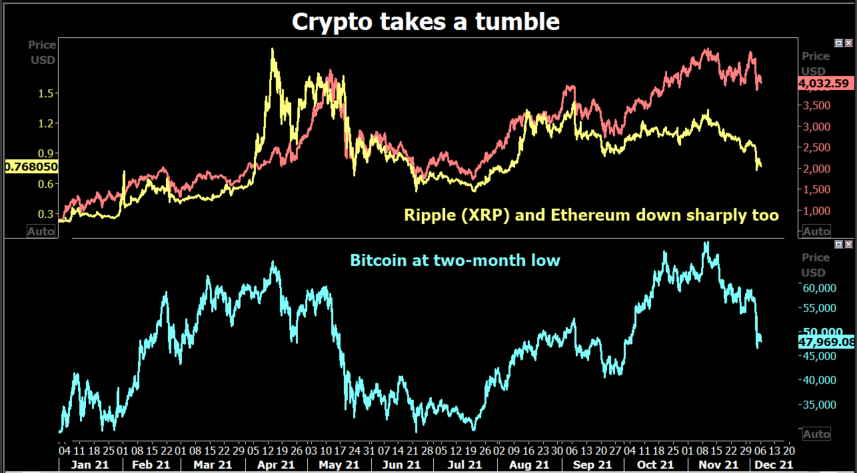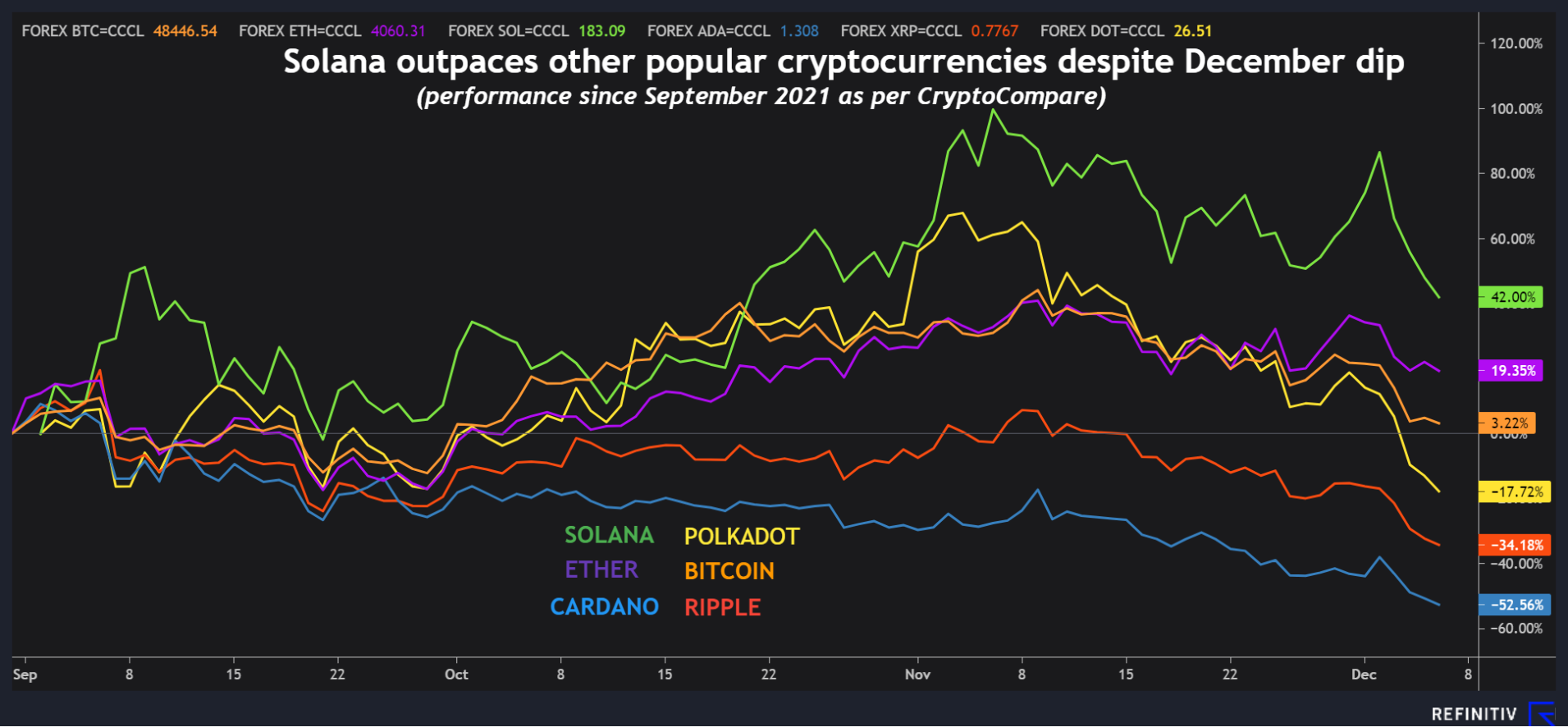A flash weekend bitcoin crash that wiped out a fifth of its value and caused $2 billion worth of positions to be liquidated has soured investor expectations of a massive run-up in the world’s largest cryptocurrency into the year-end.
Cryptocurrency analysts were not quite sure what triggered the heavy selling, but pointed to the a plunge in margin borrowing, in fresh futures positions and to activity by large holders of bitcoin as evidence of mass liquidation.
Bitcoin fell as far as $41,967.5, levels that made it 40% cheaper than the Nov. 10 record of $69,000. By Monday, it was back above $47,000, with a lot of investors still nursing wounds.
“Q4 will be a hard month, the prospect of hitting $100,000 as a lot of people were hinting at due to various round numbers, technical analysis, that’s out of reach now,” said Matt Dibb at Stackfunds, a Singapore-based crypto fund distributor.
“Our view is will be neutral-to-bearish over the short term. And recalibrate.”
While the cryptocurrency world is no stranger to volatility, Saturday’s crash was the biggest since a 31% collapse in bitcoin’s price on May 19. According to cryptocurrency analytics platform Coinglass, bitcoin’s market capitalisation has fallen to about $931 billion from $1.25 trillion on Oct. 21.

Saturday also saw diehard bulls and the dip-buying investors make a play.
According to another analytics platform, CryptoQuant, bitcoin’s Korea premium index, or what is often referred to as the kimchi premium, hit 7.72. That index, which measures bitcoin’s price gap between South Korean exchanges and other exchanges and shows how strong bids in that risk-loving population are, was negative a month back.
El Salvador President Nayib Bukele said the Central American country had acquired an additional 150 bitcoins, on top of the 100 it bought a week earlier. read more
TOKENS AND BLOCKS
Other popular tokens including second-biggest cryptocurrency ether and solana were dragged down, last trading down 3.6% and 7.6% respectively. Both have significantly outpaced bitcoin’s gains over the past year.
The total market capitalisation of the cryptocurrency market now stands at $2.35 trillion according to CoinGecko, down after topping $3 trillion last month.

The slow wider adoption of digital assets has, however, not been interrupted by bitcoin gyrations or broader concerns about global policy tightening. Regal cinemas, operated by Cineworld (CINE.L), and AMC Entertainment (AMC.N) last month announced partnerships with digital wallet companies for accepting cryptocurrencies for buying tickets and popcorn.
Jack Dorsey-led payments giant Square’s rebranding (SQ.N) as “Block” also demonstrated more companies’ willingness to board the blockchain train.
Cryptocurrency fans and detractors alike will closely eye testimony from the top executives of eight major cryptocurrency firms, including Coinbase Global (COIN.O) chief financial officer Alesia Haas and FTX Trading CEO Sam Bankman-Fried, to the U.S. House Financial Services Committee on Dec. 8.
One particular area of focus for regulators is “stablecoins”, which are digital currencies whose values are pegged to a traditional asset such as the dollar. Stablecoins are used to facilitate trading in other cryptocurrencies.
Tether, the biggest stablecoin with a market cap of more than $75 billion, has come under fire recently over disclosures around its dollar reserves, causing some investors to grow wary.
“If (the U.S. Securities and Exchange Commission) cracks down hard on stablecoins, then algorithmic stablecoins such as TerraUSD will become king,” said Will Hamilton, head of trading and research at digital asset-focused Trovio Capital Management.
Bitcoin spot trading volumes into Tether decreased for the third consecutive month in November, according to data from CryptoCompare, while volume in the second-largest stablecoin, USD Coin, increased 11%.
-Read original story on Reuters



